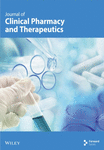Review of antithrombotic drug usage in atrial fibrillation
Abstract
Background: The important prophylactic role of antithrombotic therapy against stroke in nonrheumatic atrial fibrillation (AF) has been clearly established in recent clinical trials. There have been suggestions, however, that practice has been slow to change in light of the findings of these trials
Aim: To review cases of AF at the major teaching hospital in Tasmania, Australia, to determine whether the recommendations from the results of the trials had been translated into local clinical practice
Methods: A retrospective review of the medical records for consecutive patients who had AF documented on ECG between 1 January and 30 June 1997 was performed. An extensive range of demographic and clinical variables were recorded for patients with chronic or paroxysmal nonrheumatic AF. These included antithrombotic and other drug therapy at admission and discharge from hospital care, risk factors for stroke, contraindications to antithrombotic use, and incidents of ischaemic stroke and bleeding complications that occurred during the period from January 1996 up to 3 months after the hospital admission that was studied
Results: The 228 patients included in the study had a mean (±SD) age of 75·3±10·9 years. Sixty-eight per cent had chronic AF and 32% had paroxysmal AF. According to two risk stratification criteria, 91% and 86% of the patients with previously diagnosed chronic or paroxysmal nonrheumatic AF ( n=186) had a high risk of developing stroke at the time of admission to hospital care. However, less than one-third of these patients were receiving warfarin (or warfarin plus aspirin), with almost another one-third receiving no antithrombotic agent. Of those who were not taking warfarin, about 60% had no apparent contraindication to warfarin. For those high risk patients who had a possible contraindication to warfarin, only approximately one-third had been prescribed aspirin. Only a slight increase in the use of antithrombotic agents had occurred by the time of discharge from hospital care. The majority of international normalized ratio (INR) values on admission for patients who had been taking warfarin were subtherapeutic. The estimated annual incidence of bleeding complications in patients taking warfarin was 15·0% overall, 5·0% for major bleeds and 3·8% for intracranial haemorrhages
Conclusions: While a number of published trials have demonstrated that antithrombotic agents confer substantial protection against stroke in patients with nonrheumatic AF, the drugs were underused in our setting. There is a need to improve antithrombotic use and to develop a better monitoring system for the provision of safer and more effective antithrombotic therapy.




